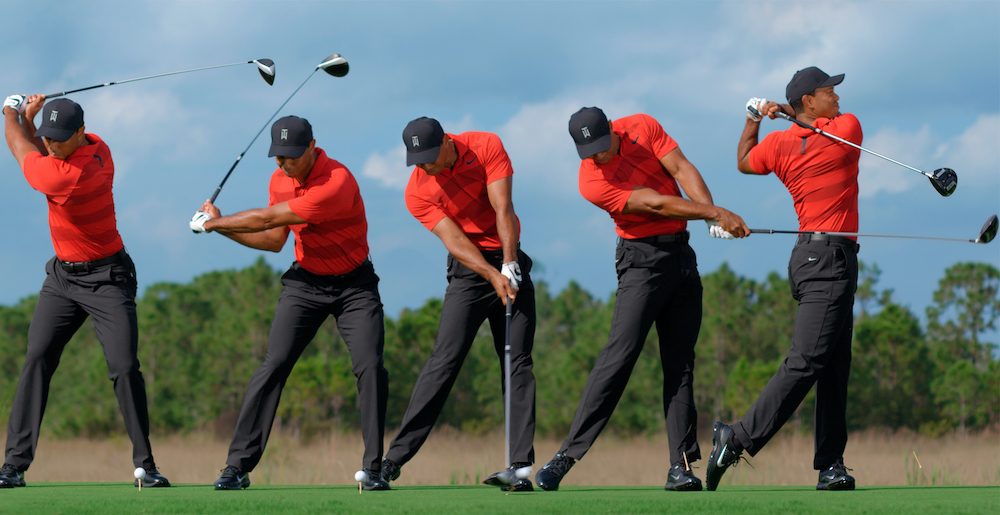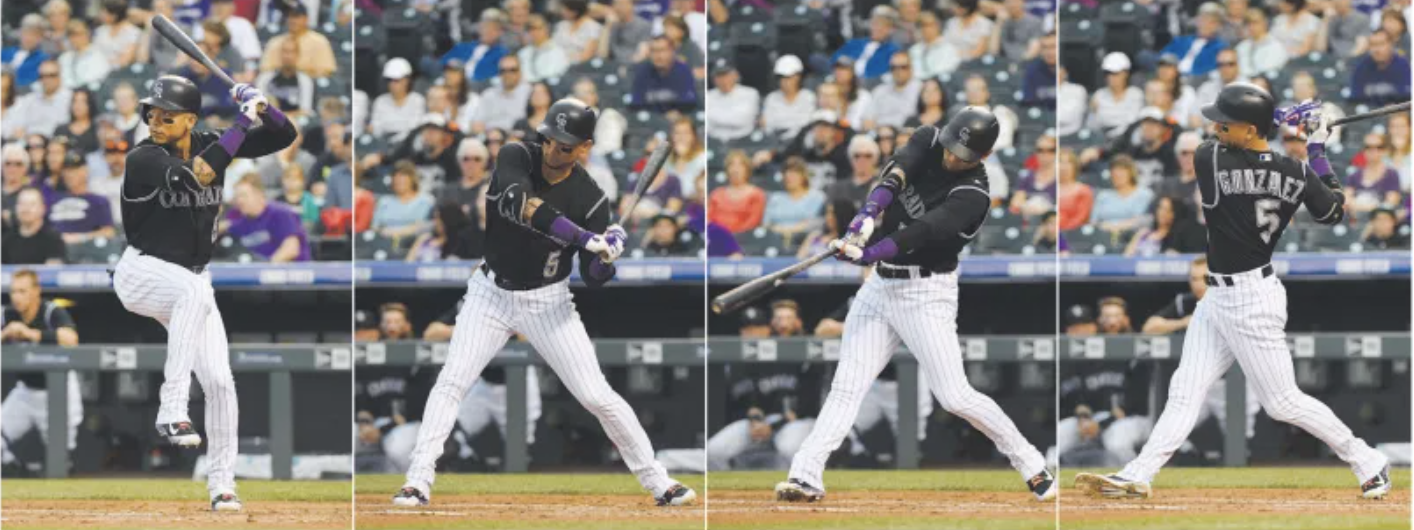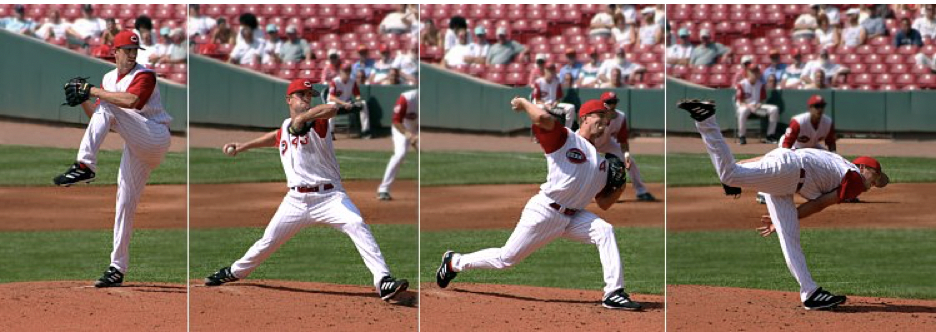Rotational strength and power are at the heart of all the sports that we know and love. Running, throwing, swinging, shooting, and punching all rely on the athlete to be able to produce and resist extreme amounts of rotational force to complete the motion safely and successfully.
But how should we properly prepare our athletes for the rigors of rotational based activities?
There is plenty of conjecture as it relates to preparing athletes to produce rotational strength and power. On the internet, you'll see coaches touting everything from low load twisty cable exercises to loaded Russian twists that promise to improve your strength and power in the transverse plane. But what if these traditional approaches are wrong?
What Happens During Rotational Sports?
Before we hit the gym and start training let's take a look at what actually happens to the body during a highly rotational sporting activity like golf.
It's often assumed that there are huge amounts of relative rotation between the lumbar spine and the hips during rotational sports. This belief is often what leads performance coaches to program lumber rotation-centric drills in hope of improving power output in rotation activities. However, looking closer at the joint kinematics of some of the most highly rotational sports in the world the motion at the spine and the hips might not be what it seems
Researchers looking at the relationship between hip and spine kinematics in elite golfers discovered that there is “A fairly strong coupling relationship was displayed between the lumbar spine and hip rotational movements”[i] meaning that much of the rotation that occurs in the hips and lumbar spine during the golf swing happens synchronously. Although there is some separation between the lumbar and hip segments, the ability to keep the motion between them relatively paired appears to be vital to both power generation and injury prevention. Murray et al. found that amateur golfers suffering from low back pain presented with reduced hip internal rotation when compared to a control group, underlining the importance of coordinating hip and lumbar spine rotation during the golf swing.[ii]
The majority of separation that occurs between bodily segments during the golf swing actually happens between the lumbar spine and the thoracic spine, highlighting what golf professionals term as the “The X-Factor”, a swing strategy that maximizes elastic energy storage and swing power due to whip-like coiling of the upper torso. This should stress the importance of developing and maintaining thoracic mobility as well strength and power of the core musculature to control the whip like the motion of the body.
In viewing the swing sequence of the golfer below, you can see how the paired motion of the hips and lumbar spine drive the downward swing movement, followed by the movement of the upper torso, creating the powerful whip-like action. You can see in the bodily positions of the golfer how vital thoracic extension, rotation, and side-bending is to a rotational expression of power.



In looking at the kinematic breakdown of other rotational sporting activities like pitching and throwing you will see similar patterning, as the disassociation between upper and lower torso movement is a hallmark of rotational power generation.
A Call Back To The Joint By Joint Approach
In understanding how the body moves to create rotational power one can't help but recognize the patterns discussed in Michael Boyle and Gray Cook's “Joint By Joint Approach” lying underneath.
Thoracic Mobility
↓
Lumbar Stability
↓
Hip Mobility
The ability to rapidly rotate the hips while keeping a tight connection to the lumbar spine through the obliques and rectus abdominis is the motor that pulls the thoracic spine as it rotates, extends and side bends its way through the ball. For a golfer, or any rotational athlete for that matter, to safely and explosively repeat powerful rotational movements they must be able to exhibit high amounts of thoracic mobility and core strength.
The Formula For Explosive Rotational Power
Now that we have a basic understanding of what actually happens during rotational activities let's take a look at what components we should look to include in a functional training program to improve rotational power.
Mobility Drills
As mentioned previously golfers who lack hip internal rotation often will present with higher levels of low back pain and will lack the ability to rotate through their swing. With this in mind, it is vital to ensure that we focus on improving and maintaining hip rotation for rotational athletes.
Breathing Drills
You might be thinking how can breathing affect my hip mobility? Well, your respiration affects your pelvic positioning and pelvic positioning affects your ability to express hip mobility. Drills like the 90/90 Breathing Drill shown below will help the athlete to better position his or her pelvis to express hip internal and external rotation. The quadruped breathing drill assist the athlete in achieving a posterior expansion of the rib cage to enhance thoracic mobility.
90/90 Breathing:
Perform 10 Breathes in the nose and out the mouth. On the exhale thing about drawing the ribs downward so that you feel your obliques engage.
Quadruped Breathing:
Perform 10 Breathes in the nose and out the mouth.
Active Hip Stretching
After improving pelvic alignment, the use of active hip stretching drills is recommended to begin improving stretch tolerance in the tissues that control hip internal and external rotation. Be sure to focus on actively stretching, by actively pulling yourself into the stretch as this will be beneficial to improving neurological extensibility in the target tissues.
90/90 Hip Stretch:
The 90/90 Stretch is a great combination stretch to develop both hip internal and external rotation. Think about actively pulling yourself into the hip and breathing throughout the stretch. Perform for 1:00 on each side in both the internal and external rotation positions.
Posterior Hip Rocking:
The Posterior Hip Rocking stretch does a great job at targeting the inferior hip capsule to allow for more rotational capacity. Perform 10 reps on each hip.
Thoracic Mobility
As covered in our discussion earlier the body segment with the highest mobility demands during rotational activities is the thoracic spine. In order to efficiently move through a rotational pattern the thoracic spine must be able to flex, extend, side bend and rotate, the following drills will assist the athlete in improving those ranges of motion.
Segmental Cat/Camel
Cat/Camel drill is meant to open up segmental movement into thoracic flexion and extension. Move slowly through this movement and focus on trying to move one vertebra at a time.
Kneeling Rib Roll
The rib roll will help you to increase your thoracic rotation and extension. Be sure to breathe deeply as you rotate and look the look over your shoulder to maximize the rotation. Be sure to keep your butt back on your heel the whole time. Perform 10 reps on each side.
Wide Split Thoracic Rotation
If you have trouble getting into the kneeling position on the rib roll use this version as an alternative. Be sure to plant your palms firmly on the ground. Perform 10 reps on each side.
Lower Body Strength: Building Power From The Ground Up
You don't build explosive rotational strength and power by simply programming a few rotational focused core exercises, you do so by following a complete full-body strength and power program that not only trains the torso musculature but also the upper and lower body.
Whether you're throwing, swinging, punching, or spinning rotational force always starts by pushing into the ground. A strong lower body is the foundation that will allow you to create the strong push that is behind rotational strength and power.
The lower body exercises below are the fundamentals of our sports performance program at Mike Boyle Strength and Conditioning. Although we do include trapbar deadlift as our only bilateral lower body lift, I think it's important to focus on incorporating single-leg exercises that stress the frontal and transverse plane musculature in the medial and lateral hip that's necessary for rotational based activities.
Trapbar Deadlift
Split Squat
Lateral Squat
Single-Leg Deadlift
Upper Body Strength
When working with rotational focused athletes I will often trend towards unilateral options after they master basic bilateral variations. The use of single-arm pressing and rowing requires the utilization of the anterior and posterior obliques systems to stabilize, replicating the stressors that occur during rotational activities.
Single Arm Dumbbell Bench Press
Split Stance Row
One Arm One Leg Row
Training The Trunk
When it comes to rotational strength and power, for better or worse, the focus has always been on core-focused exercise. As we stated previously, the core connects the dots between the lower and upper body. It's crucial to develop a strong muscular connection in the rectus abdominis and obliques to effectively transfer power from the lower body to the upper body. In this capacity the core muscles work as eccentric and isometric stabilizers, reducing rotary motion at the trunk, helping to transfer force from the lower body to the upper body. As a foundation for developing functional core strength it should be our first priority to sagittal plane core stability through anti-extension drills to promote an optimal relationship between the ribcage and pelvis. After establishing a connection through the anterior core we should progress into developing frontal and transverse plane core strength with multiplanar stability exercises.
Static Sagittal Plane Strength (Anti-Extension)
Front Plank Progression:
Ball Rollout:
Wheel Rollout:
Static Frontal Plane Core Strength
Side Plank Progression:
Suitcase Carry:
Static Transverse Plane Core Strength
Isometric Rotational Strength:
Anti-Rotation Cable Pressout:
Static to Dynamic Core Exercises
Exercises like the Keiser Push/Pull and the Cable Chop and Lift bridge the gap from static core exercise to dynamic core exercise. These exercises will progress from static variations where the athlete is focused on maintaining a completely still torso, while resisting the rotary forces from the cable to full-body integrated power exercises that require the athletes to rapidly generate power with their legs and upper body.
Keiser Push/Pull:
Cable Chop Progression
Dynamic Lift
Medicine Ball Throws
Medicine ball throws allow the athlete an opportunity for the athlete to put all the pieces together and fully express their rotational power. The mobility and strength developed with the previous exercises serve as the foundation for the explosive power that is displayed during medicine ball throwing. The Side Toss, Shotput and Alternating slam are the three major rotational medicine ball drills used in our program at MBSC.
Shotput:
Side Toss:
Alternating Medicine Ball Slam:
In summary, remember that building rotational strength and power is about more than rotational based core exercises. The rotational athlete must have the ability to rapidly rotate their hips and thoracic spine demanding large amounts hip and thoracic mobility. They must also have a large amount of upper and lower body strength to generate an initial push and follow through powerfully in the rotational pattern. Multi-planar core strength will allow the athlete to resist rotary torque and connect the upper and lower body. Medicine ball throwing will help to increase the athlete's rate of force development, training their nervous system to contract quickly and powerfully.
[i] Mun, Frederick, et al. "Kinematic relationship between rotation of lumbar spine and hip joints during golf swing in professional golfers." Biomedical engineering online 14.1 (2015): 1-10.
[ii] Murray, Eoghan, et al. "The relationship between hip rotation range of movement and low back pain prevalence in amateur golfers: an observational study." Physical Therapy in Sport 10.4 (2009): 131-135.